Historic Buildings listed by the Tasmanian National Trust page 3
Table of Contents
Georgian and Gothic Revival Style buildings forming the Heritage of Tasmania.
Highlights:
- Which Tasmanian town church has English stained glass reputed to be medieval?
- Who was the Tasmanian merchant shipping magnate, and which is his house?
- Which philanthropist commissioned John West's History of Tasmania?
- Which Hobart establishment has been licensed continuously since 1846?
- Who introduced blackbirds, thrushes, goldfinches, pheasants and partridges to Tasmania?
On this page::
 | ||
| Eskleigh, Perth (1870) | Buckland Anglican Church (1846) | Hillcrest, New Town (1845) |
 |  | |
| Govt. House, Hobart (1857) | Spikey Bridge, Swansea | Buckland Anglican Church (1846) |
 |  |  |
| Lake House TAS (1830) | Shene Estate TAS (1851) | Redlands TAS (1825) |
 |  |  |
| Ross Bridge (1836) | The Grange (1847) | Longford House (1834) |
Note: there is no public official listing of Tasmanian heritage property as National Trust Classified, apart fromthose properties that the National Trust themselves own or manage.
These pages exist to remedy that terrible lack.
All 106 Properties are summarised on this page: National Trust Tasmanian Heritage Register
54 - 64 of the 106 Properties listed in 1964 by the Tasmanian National Trust
An Historic Buildings competition was held in Tasmania during the latter half of 1963 and early 1964.- The success and wide-spread interest in the competition prompted the publication of the book:
- Priceless Heritage: Historic Buildings of Tasmania by the National Trust of Australia (Tasmanian branch) Platypus Publications 1964.
- NLA Listing: Available in the National Library of Australia collection. Format: Book; 136p. : chiefly ill. ; 28cm
- More about the Book Priceless Heritage: Historic Buildings of Tasmania
The Mercury Historic Homes Competition
- This photographic competition was held in 1963 to mark the 109th anniversary of the founding of the Mercury newspaper.
- The competition was sponsored by The Mercury and organised by the National Trust of Australia (Tasmania) southern region.
Entries 1 - 27 are on this first page
Entries 28 - 53 are on this previous page
Bushranging:
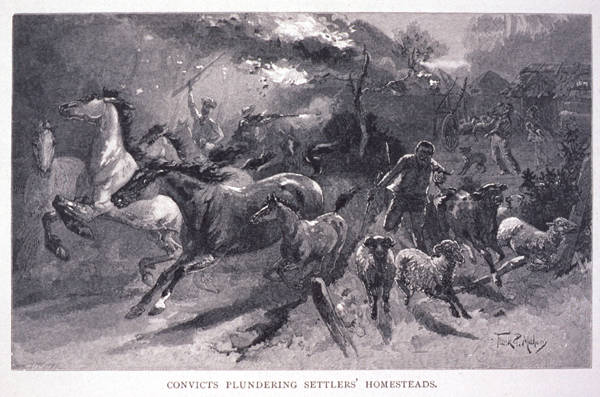 |
| Bushrangers attacking a homestead (Tasmaniana Library, SLT) |
Bushranging began in Tasmania in the early years of settlement, when near starvation meant convicts were sent into the bush to hunt. Some remained there, living by stealing from or trading with settlers. Their numbers grew as more convicts escaped, and until the 1850s there were many bushrangers.
- Bushranging continued until the 1850s under leaders like Martin Cash; William Westwood, known as Jacky Jacky, later hanged on Norfolk Island; Timothy Driscoll, alias Dido, a former Point Puer boy; and Daniel Priest, 'the friendly bushranger', who was spared execution by the intercession of several priests and a petition signed by many country people.
- The most bloodthirsty was John 'Rocky' Whelan, who would shoot then rob his victims. He was hanged, but remarks made by his accomplice, Connolly, about being made a public spectacle, helped influence the abolition of public hanging in Tasmania.
- Bushranging virtually ceased in 1859, though in 1883 two youths terrorised people in Epping Forest by shooting dead two men and burning a cottage. Both were hanged. Read more:
- Bushrangers attacked Bicton - see below
54. Eskleigh & Outbuildings RA 16087 Midland Highway, Perth, TAS, Australia
|
- Comprising house, cottage, garden house, brick sheds, barn, other house and brick walls, off Midland Highway, 2km south of Perth.
- The house conforms closely with designs by Robert Kerr in his book 'The Gentleman's House', who describes the type as 'a picturesque composition with Palladian detail'.
- The portico, tower and irregularity in plan are highly characteristic. The house and its outbuildings occupy a fine site-on the South Esk River.
- Two storey stucco Victorian Italianate residence. Three level tower with arcading to level three.
- Two storey bay windows on east and north walls. Round and square head two pane windows.
- Single storey iron verandah on north and east sides. Quoins stucco in imitation of ashlar. Bracketed eave. Slate hip roof.
 |  |
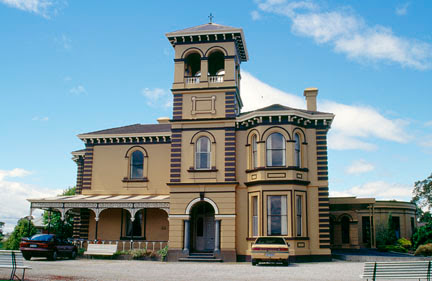 |  |
- Outbuildings comprise cottages, brick sheds, house and barn. Brick walls. Magnificent site on South Esk River.
 The BuildingErected in the style of an Italian villa, the four granite pillars at the front entrance of Eskleigh Home are believed to have been imported from Italy. The surrounding verandahs feature beautiful cast-iron lace incorporating the monogram of William Gibson, and boast an original floor of Italian terrazzo.  Ground FloorFacing the front door of Eskleigh Home, is a niche, which is an interesting feature, although common of old Italian villas. Beautiful stained glass panels flanking the front door depict Australian flora and fauna, with these designs also used as motifs on the painted ceiling.
First Floor
| Eskleigh Home incorporates the old home of Mr William Gibson and his family, which was called 'Scone'.
| |||
About EskleighEskleigh is a not-for-profit incorporated body providing high quality support to people with a disability, their families and carers within Tasmania.The Eskleigh Foundation provides nursing and supported care services to younger people with disabilities. Eskleigh Home Set on 23 acres in Perth, Eskleigh Home boasts a charming residence with beautiful gardens and surrounding farmland. It provides a peaceful environment for clients to socialise and enjoy a real quality of life. The 42-bed home combines the sophistication of a modern care facility with the historical charm of the former Scone homestead. The $8,000 Tasmanian Art Award is an art competition and exhibition held each year at Eskleigh Home near Perth, Tasmania with all works offered for sale to the public. |
|
- Tasmanian Heritage Register Place ID #5242 - top of page
55. Bicton, 338 Isis Road, Campbell Town, TAS, Australia
| ||
| Bicton, near Campbell Town, Tasmania, from "Priceless Heritage" |
A two storey Georgian house built about 1836 by Andrew Gatenby for his son Christopher.
- The house is notable for its neo-classic detailing at the front door.
- It has a fine setting below the Western Tiers on the Isis River.
|
| ||||
| Along the Auburn road from ‘Barton’ is ‘Bicton,’ another old Gatenby home owned by Mr. T. L. Gatenby, who runs it with ‘View Point,’ on the opposite side of the river. The old distillery which once stood here on land granted to Reed and Turnbull on the Isis, has produced no liquor for many a long year. T.Y. Lowes (of ‘Lowes Park’), a Hobart auctioneer of the old days, was granted part of this estate which was afterwards bought by the Gatenbys. The Distillery Bridge crosses the river near where the old distillery was built. - A Short History of Campbell Town and the Midland Pioneers | Bushrangers robbed ‘Bicton’ and forced Christopher Gatenby to carry the stolen goods back into the limestone hills— near the summit of the Tier. Here it is reported that many caves exist, most of them unexplored, which run right back into the range. These caves were the hiding-places of many a gang of bushrangers and it is said that far in the cold recesses of the living rock are piles of hidden booty, lost and forgotten. Gold watches and rings, muskets, coins and jewellery, may still be there, awaiting discovery in the quiet hills, lying under a shroud of dust that has settled on them as the years have passed. |
- Two storey Georgian. Brick with stucco trim to quoins and reveals in imitation of ashlar. Iron hipped roof.
- Three bay facade - twelve pane windows, four panel door with geometric design to transom light and bracketed cornice.
- Two storey brick kitchen wing - originally fully detached. Fine site at foot of Western Tiers on Isis River.
- Tasmanian Heritage Register Place ID #4993 - top of page
56. St John the Baptist Anglican Church and Churchyard Duke Street, Buckland, TAS, Australia

The church of St John the Baptist has survived intact since its construction in 1846-48, with no alterations or additions, apart from possible replacement of the flooring, and the provision of the fibrous cement imitation slate roofing, which replaced an earlier shingled roof.
- The church retains original fitings and furnishings. The structure and fabric of the building are in reasonably sound condition, and were recently the subject of conservation work, under the supervision of Hobart architects, Crawford, Cripps and Wegman.
The importance of St John the Baptist Church is partly its age - it was built in 1846 to a design by English revivalist architect, Richard Cromwell Carpenter (1812-1855) - and its East Window.
- There has been much speculation about the age of the East Window with some people claiming that it was originally designed for Battle Abbey in England, a church which dates from 1094.
- There have probably been no other historical Australian stained glass windows more talked of, argued about, or written of in the last 160 years, than those in the Chancel of St John the Baptist Church at Buckland, Tasmania.
- Over the course of more than a century and a half, the legendary history of these windows at Buckland have been embellished into such an extraordinary myth, that they have now become more famous for the stories concocted about them, than the artistry and beauty of the windows themselves. (Read about the myth)
- The legendary tales will no doubt continue for many more centuries but the simplest explanation of the windows origins is, as it was originally stated in “The Mercury” in 1850, made by the Irish born artist Michael O’Connor in London in the late 1840’s. - Stained Glass Australia
 |  | ||||
|
| ||||
|
|
- On 29 May 1846 Bishop Nixon forwarded the plans to the Colonial Secretary. The Lieutenant-Governor's approval was given on 6 June.
- From the outset the Buckland church was to be dedicated to St John the Baptist, and the first stones were quarried on 23 June 1846, the eve of the saint's feast day.
- The foundation stone was laid by Archdeacon Marriott, seven weeks later, on 12 August.
- Notwithstanding various interruptions, construction proceeded rapidly - the majority of the work being undertaken by convict labourers from the nearby probation station.
- Cox supervised the work with meticulous attention, and in March 1847 reported that the work "is now about twelve feet above the ground".
 |  |
- On 9 March 1847 Cox forwarded to the society a sketch with the window dimensions, and full-size details of the reticulated tracery. He gave specific instructions regarding the design of the window, to be based on the life and martyrdom of St John the Baptist.
- Cox's letter was published in 'The Ecclesiologist' in October 1847 (vol. VIII), and prompted support from his English colleagues. Arrangements were made for the stained glass artist, Michael O'Connor of Berners Street, West London, to prepare an appropriate design, based on the information supplied by Cox.
- Conforming with the philosophy of archaeological correctness inherent within Carpenter's design for the church, O'Connor produced a window of medieval appearance, complete with inscriptions in latin.
The church of St John the Baptist at Buckland is a seminal example of the English parish church and walled churchyard translated into a Colonial situation. (D.2).
- It is an excellent and early example of the Victorian Academic Gothic style, closely modelled on English antecedents. (D.2).
- The church of St John the Baptist represents one of the earliest attempts in Australia to create an architecturally correct church, according to the principles of the ecclesiological society (A.4) and has strong associations with the English architect, R.C. Carpenter, the ecclesiological society and with the Rev'd F.H. Cox, who later became a prominent and influential member of the Anglican church in Tasmania. (H1).
 |  |
 |  |
- Animated gallery of Stained Glass - Stained Glass Australia
- Tasmanian Heritage Register Place ID #1501 - top of page
Buckland | Buckland: A quiet rural village noted for the beauty and historic importance of its Anglican Church 
|
57. Hillcrest 10,10A Boa Vista Road, New Town, TAS, Australia
"Hillcrest, a heritage listed Victorian Italianate style home dating back to the 1880's, is a sunny spacious family home of 286sqm on a significant parcel of land of 1056sqm.- Located in a highly sought after street of New Town, Hillcrest has magnificent eye catching street appeal and a wonderful presence."
- Square in plan, it has a corner tower (over 1/4 of floor area) extending up to third level. Three sides of the house have timber loggings (now glassed in) with arched openings, mouldings and pilasters.
|
| ||||
|

- Frederick Thomas, an architect, purchased about three-quarters of an acre of land from Hampton for ₤340 in May 1854 and constructed Hillcrest, an Italianate style house with distinctive three-storey tower.
- Hillcrest was aptly named, enjoying extensive views in both directions - to the south over Hobart and down the Derwent estuary, and to the north over New Town and up the Derwent valley.
- William Willett purchased Hillcrest from Thomas for ₤900 in August 1856 and his extended family were to own the property for almost ninety years.
 |  |
 |  |
- Willett established greenhouses and hothouses on the property, cultivated a wide variety of plants and employed the latest horticultural techniques.
- When Willett died in January 1883, he left Hillcrest to Elizabeth, his wife. When Elizabeth died in August 1903, she bequeathed Hillcrest to her nephew, the eldest child of her brother, Josiah Smith.
- A few years later, the property passed to another of Josiah’s sons and ownership was subsequently transferred to Josiah’s only daughter. The family’s ownership of Hillcrest ended in 1944.
- Sold for $755,000 Date: Tue 11-Jan-11; Sold by private treaty 20 February 2015 - Price Withheld
- Tasmanian Heritage Register Place ID #2658 - top of page
58. Government House, and Garden, Domain Road, Hobart, TAS, Australia
- One of the most splendid regal residences in the Commonwealth.
 |
| The Tudor-inspired Hobart Government House of Tasmania |
- Listed on the Register of the National Estate
- Gallery from the blog On The Convict Trail:
- Hobart Government House is a seventy-one-room castellated sandstone mansion in Tudor style, encircled by a (dry) moat (to protect from bushrangers and republicans) and set on 15 hectares of (very private) landscaped grounds, and overlooks the Derwent River.
- Anthony Trollope, the English novelist, said of the building "It is, I believe, acknowledged to be the best belonging to any British Colony ... it lacks for nothing necessary for a perfect English residence." - From the book "Living in History, Tasmania's Historic Homes"
Tudor or neo-Gothic?
- Gallery of Tudor architecture similar to Government House architecture
- Montacute House in Somerset is late Tudor, termed 'Elizabethan' - with 'Dutch gables', notice the mullioned windows, oriels and chimneys
|
|
- Internal finishing was completed over the following two years.
- Antique dealer John Hawkins has written three articles on the early furnishing of Government House:
"The Creation and Furnishing of Government House, Hobart by Lt. Governors Sorell, Arthur and Franklin between 1817 - 1843"
- Part 1 - Sorell (1817 - 1824) Published Australiana, November 2008 Vol. 30 No.4
- Part II - Arthur (1824 - 1836) Published Australiana, May 2009 Vol. 31 No.2
- Part III - Franklin (1837 - 1843) Published Australiana, August 2009 Vol. 31 No.3
 |  |
 |  |
- It has a history of false starts to its construction and the final building is to a design of WP Kay on foundations of an earlier scheme by James Blackburn.
- Built in the period 1855-58, it has been described as a combination of Elizabethan and Scotch Baronial types. The buildings, outbuildings and site are of essential architectural and landscape importance.
- In 1805, after two years in a tent at Sullivans Cove, Governor Collins moved into the first Government House – a new wooden hut in Barrack Square. As local bricks gradually became available the hut was extended, but it was a primitive three-room home that let in the wind and rain.
- In 1807 Governor Collins built a crude brick residence in Macquarie Street, near today's Franklin Square, which Davey occupied in 1813.The second Government House was built in 1817 at the junction of Macquarie Street and what is now Elizabeth Street. It had 14 rooms on two storeys and had servants' quarters, a coach house and stables, but it was badly built – of brick, wood and stucco, with later extension of sandstone – and was demolished in 1858.
- In 1817 renovations occurred for Sorell 's benefit, but by 1825, the office-residence was in a 'ruinous state'.
- Early plans for a replacement never came to fruition, although alterations and additions between 1829 and 1831 meant that the residence grew to 17 rooms.
- Franklin received authority to build in 1840 and James Blackburn design was accepted in 1842.
- However in May 1842 architect William Porden Kay arrived in the colony, unimpressed that the designs had been prepared by convicts.
- Kay was appointed Director of Public Works and designed a grand new Tudor revival structure of two colours of sandstone.
- Blackburn was ordered to discontinue work on Nov 17 1842 - already built walls were pulled down and a building designed by Kay was erected on Blackburn's foundations.
- In 1853, during Denison's tenure, Kay adapted Blackburn's plans and construction recommenced using on-site sandstone, Huon pine and teak from the convict hulk Anson.
- Costs reached £67,872. Considerable convict labour was used, and fine craftsmanship is evident.
- In 1857 Fox-Young moved in despite just ten of seventy rooms being ready, and after its completion Anthony Trollope dubbed Government House the 'best belonging to any British Colony'.
- In 1872 a railway line separated it from the water's edge, as did a road to the Hobart Bridge in 1943. An originally intended conservatory was added in the 1980s.
  |
|
- The multi gabled facades are given interest by two storey bay windows, 3 towers (2 with castellated parapets) an Oriel window and numerous Tudor style chimneys.
- Magnificent interiors including main ballroom with high vaulted timber ceilings. Twenty five acre park site within Queens Domain. Stone outbuildings.

Government House Garden
The gardens are a large park designed as a setting for a Gothic Revival mansion designed by William Kay and built in 1855.
- The gardens are adjacent to the Botanic Gardens, overlooking the Derwent River. The expanse of gardens contains numerous stone outbuildings which reflect the stylistic theme of the main building.
- The garden contains visual features of a picturesque garden style which includes a mass of vegetation through which the Gothic style buildngs project, a romantic natural style lake and enframed views across the Derwent.
- The garden contains many enclosed scenes of high visual quality. It is an area where formal public events are conducted. The estate which constitutes government house, including the garden, is proclaimed and protected by the Government House Land Act 1964.
- The garden is not open to the public.
 |  |
 |  |
- it demonstrates the picturesque landscape style where from a distance the garden contributes to an image of mystery with a Gothic structure looming from a rocky foreshore and a mass of dark vegetation:
- from within it demonstrates a nineteenth century garden style with some formal spaces, a variety of of plant species, axial views, enframed views, a formal terrace and a romantic style lake.
- Aesthetically the garden has significance for providing high quality scenery from the historic garden structure and the mature vegetation, and for providing a setting of period integrity for a building complex of high architectural merit.
- The garden has some social significance for the many formal community events that have taken place within the grounds of Government House.
- Tasmanian Heritage Register Place ID #2026 - top of page
59. Spiky or Spikey Bridge Tasman Highway, Swansea, TAS, Australia
 |
| Spikey Bridge, Swansea, Tasmania; Unknown; Unknown; TSO00017796 |
|  |
- Built by convicts from Rocky Hills Probation Station
- The Spiky Bridge is part of the old convict coach road that connected Swansea with Little Swanport and the east coast road to Hobart. It sits beside the current east coast highway, approx 7kms south of Swansea.
- By the 1820’s the reaches of white settlement were being pushed further up Tasmania’s east coast. Settlers such as George Meredith and Francis Cotton, were drawn to the area by the prospects of farming and whaling.
- Despite constant complaints from the settlers to the Government regarding the lack of road access, by 1840 there was still no road between Little Swanport and the Swansea district. Read more:
- Under the convict probation system that operated in the 1840’s, all convicts had to initially serve time in a government work gang. Previously , convicts had generally been assigned to work for private settlers upon their arrival in the colony.
- James Radcliffe’s “Lisdillon” estate and associated salt works were just two of a number of properties in the district that had relied on assigned convict labour. Read more: On the Convict Trail
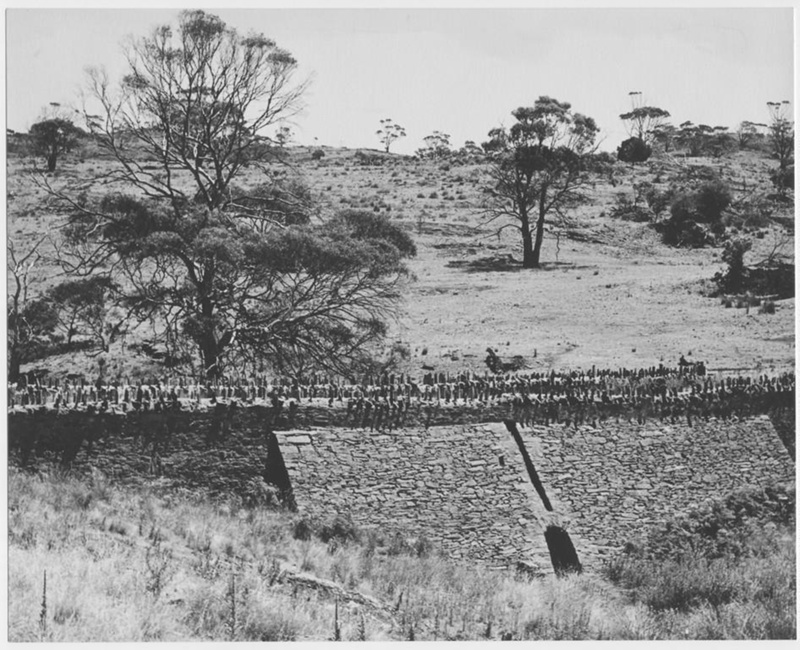 |
| Spikey Bridge, Swansea, Tasmania; Unknown; 1963; TSO00018354 |
- Field stone bridge. Appears to be dry stonework. Side walls of random rubble being more a causeway with small arched culvert.
- Stone buttresses on west side beside central channel. Lower side of west wall (sloping side) was strengthened during 1920's.
- Bridge parapets with large and small upright stones give present name.
- "It's just a bridge but it's pretty cool. Built by convicts in 1843, this bridge abruptly pops out of the landscape to baffle passers-by with its odd design.
- The bridge was made from field stones laid without mortar or cement and the parapet features field stones laid vertically, giving the bridge a spiky appearance.
- It's claimed that the spikes were designed to prevent cattle falling over the sides of the bridge, though no one really knows if this is true. There are also the remains of the Governor's cottage on the hill overlooking the unusual bridge.
- The bridge is 7.5 km south of Swansea on Tasmania's East Coast, on the western side of the highway opposite the beaches of Great Oyster Bay. Across the Bay are stunning views to the mountains of Freycinet National Park". Read More:
- Tasmanian Heritage Register Place ID #1567 (former La Farelles Bridge) - top of page
Swansea , Tasmania | Swansea, East Coast Tasmania |
60. Former State School, was the Primary School, Bridge Street, Ross, TAS, Australia
The picturesque Ross Primary School was built in about 1875 and officially opened in 1877. It was closed in 1999 due to falling pupil numbers.- The Gothic Revival schoolhouse is a very important element in the historic village both in its position on the crest of the hill to the south of the Council Chambers and as an example of an early educational structure.
|
| ||||
|
|
- It has coursed random rubble sandstone walls with fine pointed sandstone quoins at corners and around the tall combination double hung and casement multipaned windows.
- The gabled ends have decorative open fretwork timber barge boards with a finial. Original Gothic toilet adjacent.
- The Ross School closed Feb. 26, 1999 - Read more:
- Read about the other Ross school, Horton College
- Tasmanian Heritage Register Place ID #5290 - top of page
Town of Ross | Ross School Closes*
| ||
A town like Ross: ABC Commentary | |||
61. Lenna, or Lenna House 20 Runnymede Street, Battery Point, TAS, Australia
A fine merchants townhouse in florid Italianate style, this building is a good example of elaborately detailed high Victorian residential architecture and is of considerable importance to the townscape of Battery Point.
|
| ||||
|
|
- Richly modelled facade with bay windows, two storey colonnaded verandah, balustraded parapet, elaborate bracketing to cornice.
- Slate roof. Round head dormers with elaborate bracketing. Bracketed cornice to chimneys.

Port of Hobart with Lenna at the top of the Hill on Battery Pt (1890) - Roof deck at level three. Iron posts at entry. Iron railing over stone wall to street.
 |
| Alexander McGregor (1821-1896) |
Alexander McGregor, the builder of Lenna, was a boy of 10 years when he arrived on 28 February, 1831 in Hobart Town, Van Dieman’s Land, on the ship ‘Drummore’ with his family.
- Born in Paisley Scotland, he grew up to be a canny Scot, shrewd, practical and hard working.
- With his brother John, he learned the ship building trade and took over the Domain shipyard which later was solely run by John.
- Alexander became more interested in business and flourished as a merchant trading from his offices and warehouses on the corner of Elizabeth Street and Lords place, the present site of the Hobart Post Office in the CBD.
- Alexander built the largest fleet of sailing ships individually owned south of the Equator, including whalers, barques, schooners and a brigantine.
- “Lenna” is the Tasmanian Aboriginal word for “house” or “hut”. Lenna was erected in stages, work on the first section facing McGregor Street (then called Cross Street) in Battery Point was started in 1874 and incorporated the original Bayley house, now the hotel kitchens.
- The next section was added in 1880. Built of local sandstone and handmade bricks, the Italianate style building is on the Heritage Register and is a historical Hobart landmark mansion, and just a few short steps from the former waterfront buildings in Salamanca Place.
|
|
- While Sir Alfred Ashbolt was in London serving as Tasmania’s Agent General, the house was leased and used as a guest house for some years by Mrs Cremmer. From 1942 to 1971, the house was owned by Mr and Mrs A.E (Jack) Boyes and family who had planned to convert it to a hotel, but after Mr Boyes’ death it was divided into three apartments and remained thus until 1971.
- In 1971, Innkeepers Limited purchased the property and in 1973, work commenced on the new wing of Lenna. The Architect was Mr Ermin Smrekar of Melbourne.
- The original fountain, which stood in front of the first residence on the site, has been installed in a new setting, testimony to our commitment to provide traditional elegance and service in modern comfort and surrounds.
- Tasmanian Heritage Register Place ID #1915 - top of page
62. Custom House Hotel 1-5 Murray Street, Hobart, TAS, Australia
- Listed on the Register of the National Estate
- Strong example of colonial hotel generally in good condition and with simple detailing eg. fenestration, rounded and articulated resolution at street corner. These buildings are also a part of a larger group comprising adjoining buildings in both Murray and Morrison Streets.
- Good relationship to waterfront.
|
| ||||
 |  |
- Central building is cement rendered. Ground floor openings and window mullions intact but glazing bars, door fitments removed.
- Upper level windows generally intact. Central building has dominating parapet, corner building has cornice.
Built on Hobart’s waterfront for Charles Gaylor and licenced in 1846 it derived its name from the fact that the then Custom House (now Parliament House) is opposite.
- Mr. Gaylor was one of Hobart’s early settlers and his name is cut deep in the front coping stone of the building.
- In Gaylor’s day it was called the ” Chop House” which meant that a good square meal could be obtained inside. In the later years it has been converted into a residential hotel encompassing the shop next door and the Marine Hotel.
 |
| Customs House Hotel, 1 Murray Street, Hobart, Tasmania |
In 2003 the Customs has added the old ship chandlers building on Morrison St to make a brand new restaurant, this has also added twelve new accommodation rooms six with waterviews.
- For many years this establishment has been a popular port of call and there was a time when it was a fashionable resort.
- Customs House Waterfront Hotel in 2009 offers ACCOMMODATION - An award winning RESTAURANT, LIVE Entertainment Wed – Sat to add to the fun & experience which is the Customs House Waterfront Hotel - Website
- Tasmanian Heritage Register Place ID #2513 - top of page
63. Anglican Church of St James, Montacute Road, Montacute, near Bothwell, TAS, Australia
The Anglican Chapel of St James, at Montacute, a hamlet, was built by Capt. William Langdon in 1857. It is one of the few surviving ‘estate’ chapels. |
| Chapel of St James, Montacute nr Bothwell (1857) |
A simple Gothic Revival stone country church, built in 1857 by Captain William Langdon R.N. as part of the Montacute Estate.
 |
| The beautiful stone church of St James, Montacute. On 11 January 2004 |
Hidden in the farmlands of central Tasmania is the beautiful stone church of St James, Montacute.
- On 11 January a family Christening took place.
- The infant was Poppy Sarah Iris Hallett, daughter of Richard and Amy Hallett, and seventy relatives and friends were present to celebrate Poppy's special day. Read more:
- The building was restored in its centenary year by the present owners. It sits on high country with distant views to the Clyde valley.
- The Montacute family chapel, which cost Langdon a small fortune to build in the 1850s, is still in use today.
- Consecrated in 1857, St James is part of the Southern Midlands parish of the Anglican Church and used for services from time to time;
- Richard and Amy's children, nieces and nephew were all christened there in the last five years.
- The font was carved from a single piece of sandstone, the original organ is behind the back pew and many Hallett descendants rest in its grounds.
- Simple Gothic Revival church. Stone. Slate roof. Porch. Lancet windows. Bellcote on west gable end. Historic graveyard. High site overlooking Clyde valley. Isolated.
Montacute had been a thriving pastoral settlement established by Captain William Langdon on land he was granted in 1823.
- As the operator of trading ships between Hobart and London, Langdon is somewhat dubiously recognised for introducing blackbirds to Tasmania; he also brought out pheasants and partridges.
- From Napoleon's grave at St Helena reputedly came willow trees that he planted along the River Clyde.
- And by his door he planted a rose cutting from Montacute House in his home town of Somerset, regarded as one of the United Kingdom's most glorious Elizabethan mansions. Read more:
- While still engaged in trading between England and the Australian colonies, Captain William Langdon in 1823 received a grant of 1500 acres (607 ha) on the Clyde River near Bothwell. He added to this property, which he called Montacute, by purchase.
- In September 1834 Langdon arrived in Van Diemen's Land with his wife Anne, née Elliott, of Somerset, and their daughter Anne, to settle on his colonial estate.
- On his early voyages to Van Diemen's Land, and later, he introduced blackbirds, thrushes, goldfinches, pheasants and partridges to the colony.
- He was a devoted supporter of the Church of England and in 1856-57 built a church costing about £2000 on his own property; in 1860 he was a leader in establishing the practice of opening parliament with prayer. Read more:
- Tasmanian Heritage Register Place ID #865 as St James Church & Cemetery 1288 HOLLOW TREE RD HOLLOW TREE 7140 - top of page
64. Lonah House, RA405 Penguin Road, Penguin, TAS, Australia
 |
| The Three Sisters are small offshore islands that are home to a huge variety of bird life. |
There are many beautiful old timber houses in the Ulverstone area of North-West Tasmania, which date from 1880-1920.Read more:
- Lonah is a house about 4 km east of Penguin, near Ulverstone, in north-west Tasmania.
- Lonah, which overlooks the Three Sisters Islands on the road between Ulverstone and Penguin, was built by a retired English soldier, Major-General Lodder, around 1875.
- Lonah is an unusual Georgian transitional house built in the period 1875-78 for Major.General W.W. Lodder, one of many retired British and Indian Army officers who settled on the north west coast of Tasmania.
- The terraces and bay windows take full advantage of the impressive siting of the house with expansive views of the sea.
- The house is complemented by an old extensive garden.
- The location of "Lonah" on the rocky shore of north-west Tasmania was an ideal spot for shell collecting.
- One of Lodder's daughters, probably Mary, is remembered in Malacological circles by being an active shell collector. There are several Tasmanian shells named after her, such as Marginella lodderae.
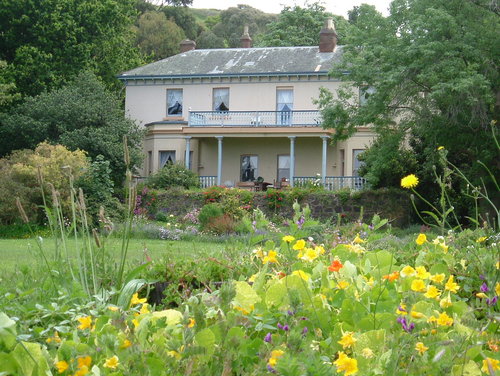 |  |
 |  |
- Brick and stucco. Twelve pane and two pane windows. Shutters to level two windows. Portico. Skillion addition (one storey) behind parapet at rear.
- Fine site overlooking sea. Old garden. Bay windows, terrace and verandah.
- Tasmanian Heritage Register Place ID #723 - top of page
Back to Contents
Tudor style gallery
Tudor and Elizabethan architecture (1485-1603)
|
|
| ||||||||||
|
|
|

































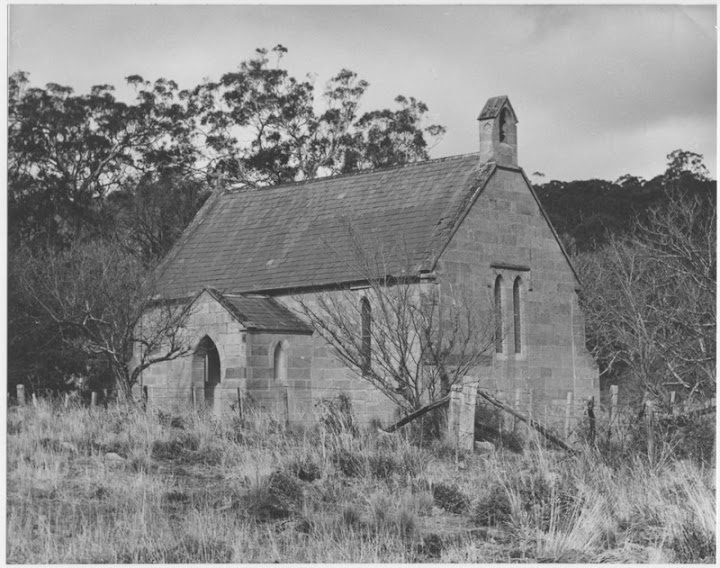








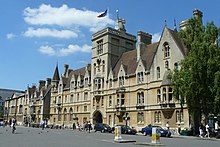



No comments:
Post a Comment